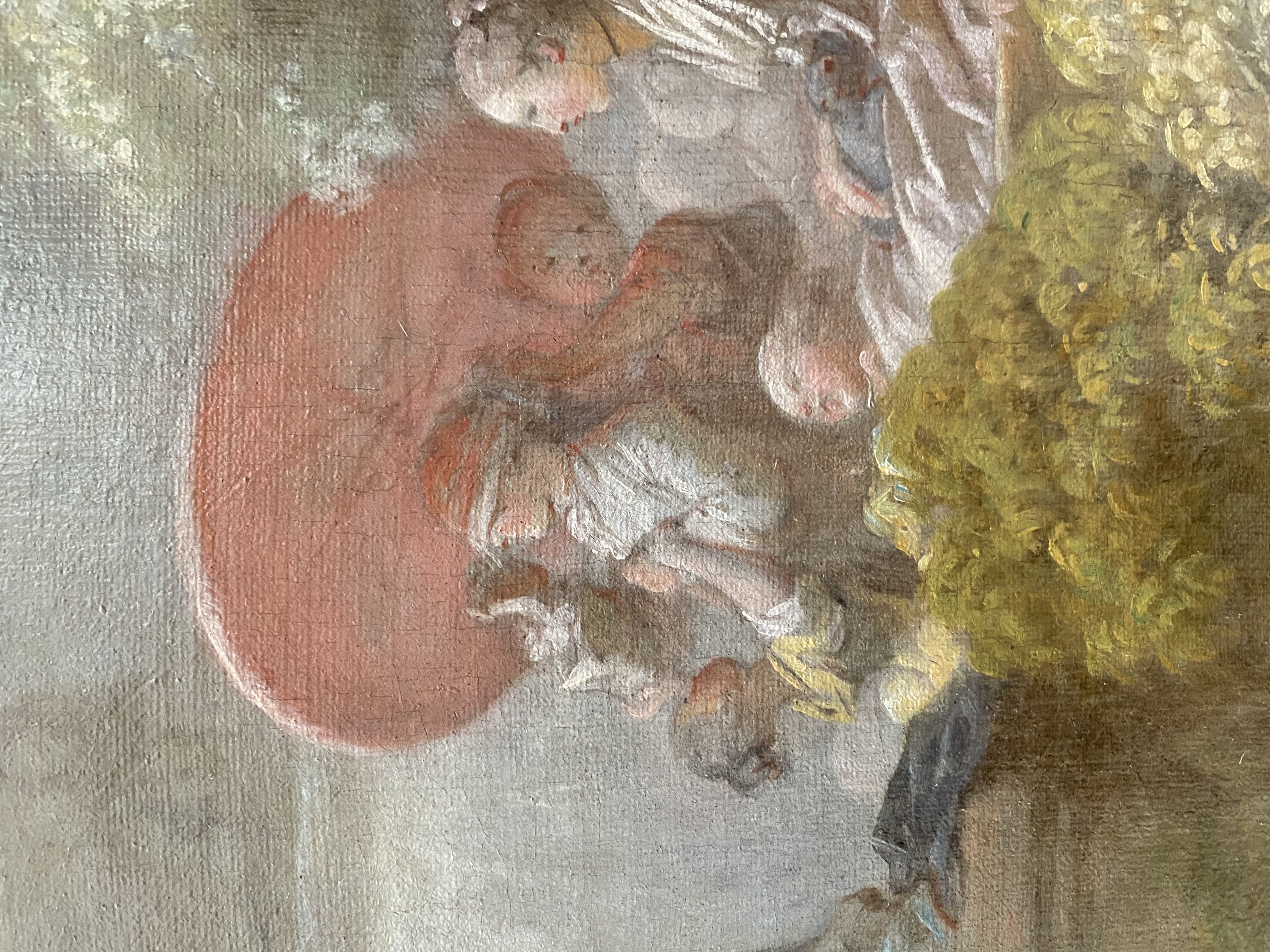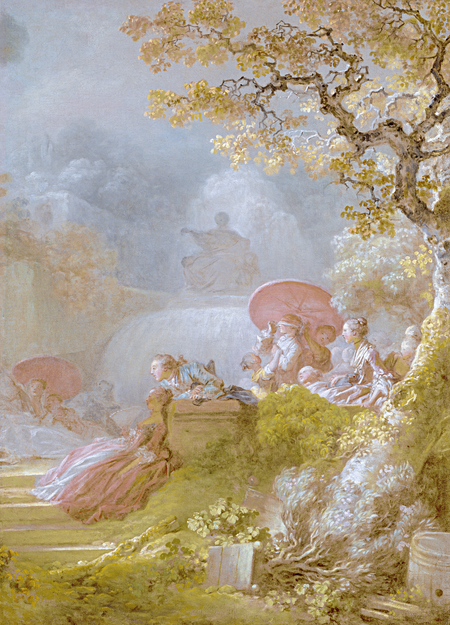Work of the Week # 13

Imagine we are together in a park. At least a dozen of us have made the trip. The sun is out so some in our group have brought along big pink parasols, in case they are needed for protection from the heat. Overall the daylight seems soft, however, and the atmosphere welcoming. It’s getting a little late in the day. Everyone is relaxed and we converse in small groups. From behind us, we hear the sound of water cascading from a large fountain set into a semi-circular niche. A few friends have gathered together around its basin. Another couple fans themselves while propped against a block of stone. A cluster of young men and women are playing a party game.
It looks like the competition is just getting started. A young man in a light grey coat is being blindfolded while, before him, a small girl in a yellow dress tugs at his left arm. She is checking to make sure he can’t see. For his part, he is adjusting the cloth that has just been stretched over his eyes. He might be trying to sneak a peek--the cheater! Or else something is happening in front of him and he is momentarily distracted from the game and wants to see what it is. Necks crane around him to catch a glimpse, too, and we sense the atmosphere is changing to one of increasing concern. The game is interrupted. Is our pleasant afternoon ending?
My description of Jean-Honoré Fragonard’s painting, called Blindman’s Buff, only begins to signal its spontaneity and complexity. I haven’t yet mentioned the glorious, moss-covered tree in the right foreground and its ascending network of bifurcating branches, or the sense of anticipation that seems to hang over the entire composition like moisture in the air. And what about the silhouetted form that tops the fountain in the distance? It looks to be an imposing figure: seated, female, with her right arm outstretched. If she had a scale hanging from that hand, we’d guess she was a monumental allegory of justice. As it is, the artist gives us only enough information to leave us wondering about her identity.
I’ve waited for the right moment to write something about Fragonard’s little painting at the Timken, in part because it is a favorite of so many people, but also because in a period of social distancing, it seemed mean-spirited to recount the Rococo picture’s open endorsement of physical contact. As we anticipate Balboa Park reopening in a few days, the time seemed right to explore it afresh. The work’s title, Blindman’s Buff, refers to a popular game among the ancien regime’s young and beautiful. The blindfolded player’s goal was to search for his favorite, listening intently to the voices around him, before reaching out to touch another body without fear or sanction.
Throughout his career, which stretched across the entire latter half of the 18th century, Fragonard painted numerous scenes like this one. He specialized in parklike settings where couples are shown swinging gleefully, riding see-saws, or playing la main chaude (a still more intimate game where one player kneels with head buried in the lap of another, while the rest of the group swats at an open palm that is held up behind their back). Indeed, at least three other versions of Blindman’s Buff by this artist are known: one is at the National Gallery of Art in Washington, D.C., one at the Toledo Art Museum, in Northern Ohio, and another small version at the Louvre in Paris.
The Timken’s version of Blindman’s Buff is slightly different than the others. More loosely painted, it is imbued with a sense of both mystery and impending drama. Scholars have suggested that the painting may have been cut down (on its left side) prior to its acquisition by the Putnams, in 1954. We don’t know for sure if that’s accurate or why someone would deliberately trim Fragonard’s composition. Something meaningful is happening just outside of the pictured space, regardless. It has begun to attract everyone’s attention and our once-carefree circumstance has been transformed.
